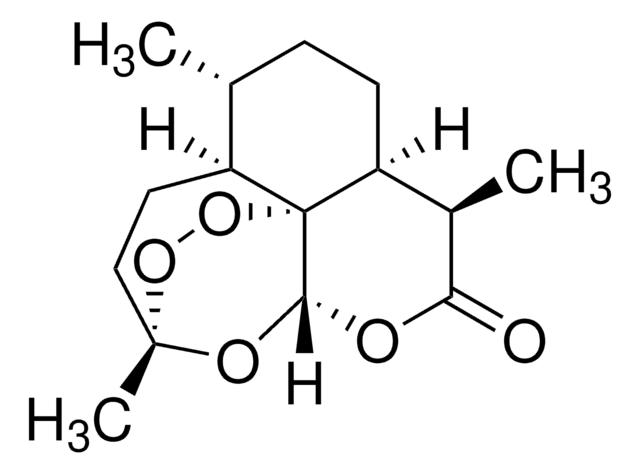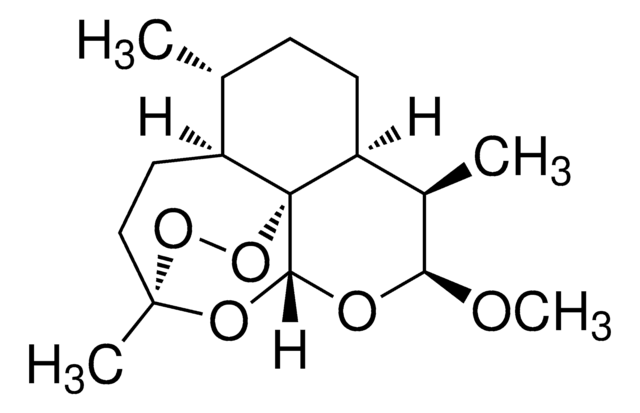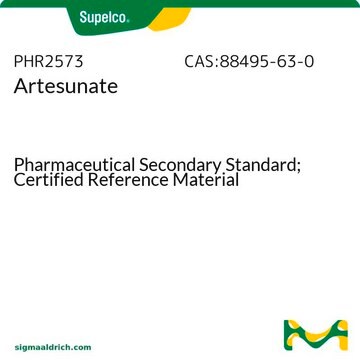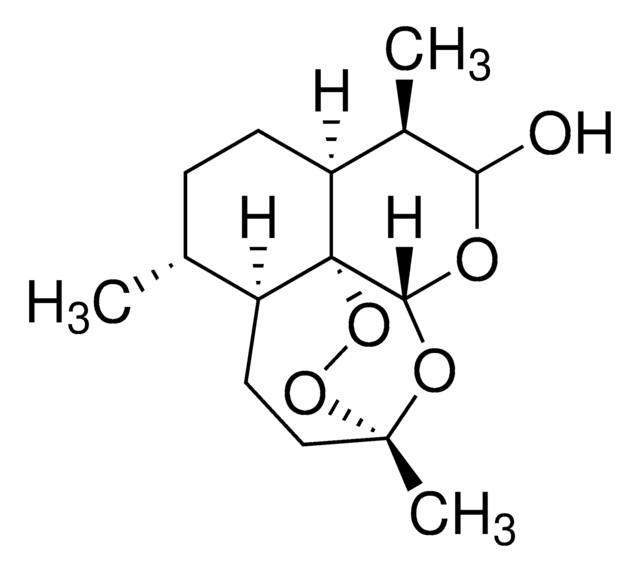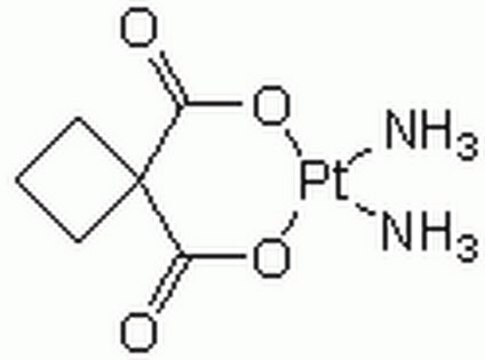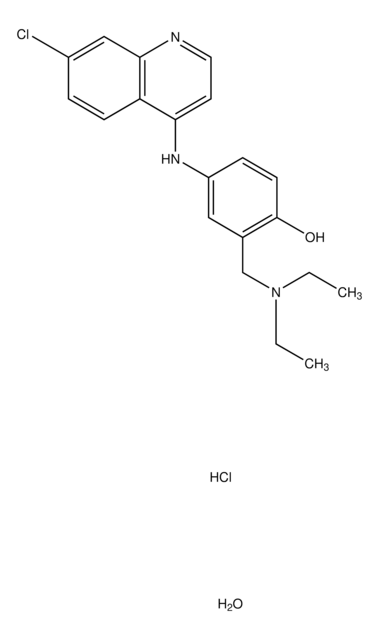A3731
Artesunate
from Artemisia annua
Sinónimos:
Artesunic acid, dihydroartemisinine-12-alpha-succinate, succinyl dihydroartemisinin
About This Item
Productos recomendados
biological source
Artemisia annua
form
crystalline powder
color
white to off-white
solubility
acetone: 33.4 mg/mL
antibiotic activity spectrum
neoplastics
parasites
mode of action
protein synthesis | interferes
storage temp.
room temp
InChI
1S/C19H28O8/c1-10-4-5-13-11(2)16(23-15(22)7-6-14(20)21)24-17-19(13)12(10)8-9-18(3,25-17)26-27-19/h10-13,16-17H,4-9H2,1-3H3,(H,20,21)/t10-,11-,12+,13+,16+,17-,18?,19-/m1/s1
InChI key
FIHJKUPKCHIPAT-JQXDXKTESA-N
¿Está buscando productos similares? Visita Guía de comparación de productos
General description
Application
- Unrevealing the therapeutic potential of artesunate against emerging zoonotic Babesia microti infection in the murine model.: This study explores the efficacy of artesunate in treating Babesia microti infection, a zoonotic disease, in mice. The findings suggest that artesunate significantly reduces parasitemia, indicating its potential as a therapeutic agent for zoonotic infections (Fazilani et al., 2024).
- Antitumour effects of artesunate via cell cycle checkpoint controls in human oesophageal squamous carcinoma cells.: The study investigates artesunate′s antitumor properties in oesophageal squamous carcinoma cells, highlighting its ability to regulate cell cycle checkpoints and inhibit cancer cell proliferation. These findings underscore artesunate′s potential in cancer therapy (Mao et al., 2024).
- 3D printing of multi-unit gastro-retentive tablets for the pulsatile release of artesunate.: This study presents a novel approach to drug delivery using 3D-printed gastro-retentive tablets for the pulsatile release of artesunate. The technology promises improved bioavailability and therapeutic efficacy of artesunate for various medical conditions (Yan et al., 2024).
Biochem/physiol Actions
Other Notes
signalword
Warning
hcodes
Hazard Classifications
Acute Tox. 4 Dermal - Acute Tox. 4 Inhalation - Acute Tox. 4 Oral
Storage Class
13 - Non Combustible Solids
wgk_germany
WGK 3
flash_point_f
Not applicable
flash_point_c
Not applicable
ppe
dust mask type N95 (US), Eyeshields, Gloves
Certificados de análisis (COA)
Busque Certificados de análisis (COA) introduciendo el número de lote del producto. Los números de lote se encuentran en la etiqueta del producto después de las palabras «Lot» o «Batch»
¿Ya tiene este producto?
Encuentre la documentación para los productos que ha comprado recientemente en la Biblioteca de documentos.
Los clientes también vieron
Nuestro equipo de científicos tiene experiencia en todas las áreas de investigación: Ciencias de la vida, Ciencia de los materiales, Síntesis química, Cromatografía, Analítica y muchas otras.
Póngase en contacto con el Servicio técnico